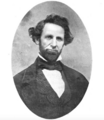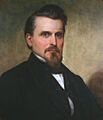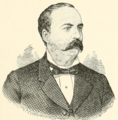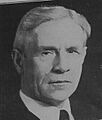Lieutenant Governor of Wisconsin facts for kids
Quick facts for kids Lieutenant Governor of Wisconsin |
|
|---|---|
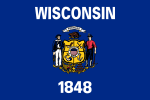
|
|

Privy Seal of the State of Wisconsin
|
|
|
Incumbent
Sara Rodriguez since January 3, 2023 |
|
| Government of Wisconsin | |
| Style |
|
| Term length | Four years, no term limit |
| Constituting instrument | Wisconsin Constitution, Article V |
| Inaugural holder | John Edwin Holmes |
| Formation | June 7, 1848 |
| Succession | First |
| Salary | $80,684 |
| Website | Official page: https://evers.wi.gov/ltgov/Pages/default.aspx |
The lieutenant governor of Wisconsin is an important leader in the state government. This person is next in line to become governor if something happens to the current governor. This could be if the governor resigns, gets sick, or is away from the state.
Since Wisconsin became a state in 1848, 41 people have served as lieutenant governor. Two of them, Warren Knowles and Jack Olson, held the job more than once. The very first lieutenant governor was John Holmes, who started on June 7, 1848. The current lieutenant governor is Sara Rodriguez, who began her term on January 3, 2023.
Contents
What Happens if the Governor Can't Serve?
The lieutenant governor's main role is to be ready to step in for the governor. This is called the "line of succession."
How the Role Changed Over Time
Before 1979, the state's rules said that if the governor couldn't do their job, the lieutenant governor would take over their "powers and duties." People in this role were called "acting governors."
In 1979, the rules became clearer. If the governor dies, resigns, or is removed from office, the lieutenant governor officially becomes the new governor. If the governor is impeached (accused of wrongdoing), is absent, or is sick, the lieutenant governor becomes an acting governor. They serve until the governor can return to their duties.
How Lieutenant Governors Are Elected
The lieutenant governor is elected by the people of Wisconsin.
Elections and Term Length
When Wisconsin first became a state, the lieutenant governor was elected for a two-year term. They were chosen separately from the governor. This meant the governor and lieutenant governor could sometimes be from different political parties.
In 1967, the rules changed. Now, the governor and lieutenant governor run for office together as a team. This means they are always from the same political party. This change also made their term of office longer, from two years to four years. There is no limit to how many terms a lieutenant governor can serve.
What if the Office is Empty?
The original state rules didn't say what should happen if the lieutenant governor's office became empty. If a lieutenant governor died, resigned, or became acting governor, the position often stayed empty until the next election.
In 1938, Lieutenant Governor Henry Gunderson resigned. Governor Philip La Follette then appointed Herman Ekern to fill the spot. This decision was challenged in court, but the court said it was allowed. In 1979, the state rules were updated to make this official. If the lieutenant governor's office is empty, the governor can choose someone new. That person becomes lieutenant governor if the Wisconsin Assembly and Wisconsin State Senate approve.
Can a Lieutenant Governor Be Removed?
A lieutenant governor can be removed from office in a few ways. They can resign, which means they choose to leave the job. They can also be removed through an impeachment trial if they are accused of serious misconduct. No lieutenant governor in Wisconsin has ever been impeached. However, two have resigned.
Rebecca Kleefisch is the only lieutenant governor in any U.S. state to face a recall election. This happened in 2012. She ran against Mahlon Mitchell from the Democratic Party and won the election.
What Does a Lieutenant Governor Do?
The lieutenant governor has specific duties and powers.
Powers and Responsibilities
If the governor asks the lieutenant governor to represent them on a state board, committee, or commission, the lieutenant governor has the same authority as the governor in that role.
In the past, the lieutenant governor also led the state senate meetings. They could vote if there was a tie. However, after a change to the Wisconsin Constitution in 1979, the state senate now chooses one of its own members to lead the meetings instead.
Who Has Been Lieutenant Governor?
| Party | Lt. governors |
|---|---|
| Republican | 29 |
| Democratic | 16 |
| Progressive | 2 |
Before Wisconsin became a state in 1848, it was part of the Wisconsin Territory. There wasn't a "Territorial Lieutenant Governor." However, the territory had a Secretary who would take over if the territorial governor couldn't do their job. You can find more about them in the List of secretaries of Wisconsin Territory.
Wisconsin officially joined the Union on May 29, 1848. Since then, 41 people have served as lieutenant governor. As mentioned, two of them served more than one term, but not in a row.
- Parties
Democratic (16) Whig (0) Republican (27) Progressive (2)
Images for kids


